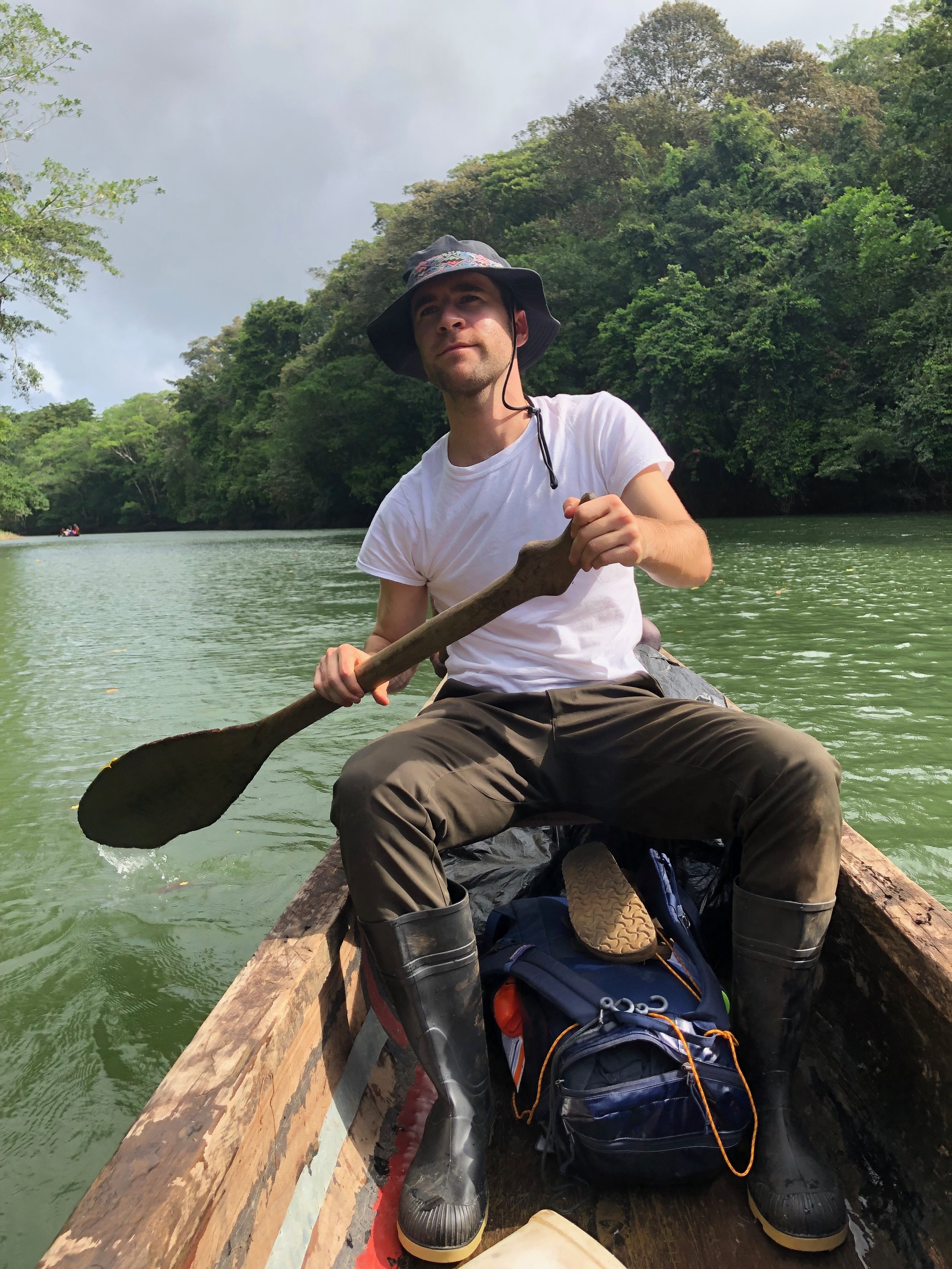In the Rain Forest
The village was built into a hill. None of the houses had walls, and the houses closest to the river were built on stilts. Jon Hull
The Emberá Purú people welcomed us into their village today. I am in a hammock strung beneath a home in their community. The homes closest to the river are built on stilts. I cannot say for sure, but it sounds like there are at least two families above me. They just hummed and sang songs to put the youngest one to bed. I can hear every word perfectly, but they are speaking in a mix of Spanish and their native language.
Day 1
The trip to the village was eventful. We loaded 25 eleven year olds onto a bus and brought them into the Panamanian jungle. We paddled dug-out canoes for an hour down Rio Pequeni.
One of my students, Milton, asked if I wanted a photo. He took it very seriously and did a nice job! Milton N.
We reached our first destination, an old Spanish outpost that was used in the earliest days of gold mining in Panama (roughly 400 years ago). We were met by two guides: one Panamanian who spoke English and Spanish, and another indigenous who spoke Emberá and Spanish. The latter gave a speech to the kids which really had one main point: don’t grab hanging vines because they might be deadly snakes.
The guide stopped every so often, picked leaves, and taught us how to use the different plants in the forest as medicines. It was an incredible experience. Somehow, no one was injured, though there were some serious falls down steep muddy hills into the abyss. Thankfully, the kids skidded to a halt, or we were positioned to catch them before they disappeared into the void.
We arrived to the community and ate fish caught in the river wrapped in banana leaves. The village chief taught us about the customs of the tribe, and the kids hung their hammocks beneath the thatched roof of the central building. As soon as the food and introductory talk was finished, they were off to swim in the river.
At dinner, we gathered around a fire and watched a traditional dance performed by the mothers in the tribe. They sang and danced beautifully and pulled us into a growing circle around the fire. It felt like something from a movie.
Now, I’m in my hammock, listening to the boys up the hill blather about their dogs and play, “I Spy.”
Boy 1: “I spy… the dark!”
Boy 2: “I spy me trying to fall asleep. Please shut up!”
Boy 3: “I spy Mr. Hull asking us to please lower our voices.”
Boy 1: “That’s not, ‘I Spy…’ that’s, ‘I Hear.’”
I don’t think I am going to get much sleep tonight.
The women of the village prepared lunch for the next group of students who arrived later that day. Jon Hull
Day 2
I didn’t sleep much. A boy came down the hill to my hammock crying because someone rocked his hammock. Now, they’re up at 5 a.m. asking if they can go down to the river.
I am happy to oblige because I’m sure they’ll wake up the entire village if we stay here. They all have their newly purchased headlamps on full blast, blinding each other whenever they look at one another. If I sound like I’m complaining, I’m not. I am loving every moment of this.
My coworker is down on the riverbank doing yoga. Evidently, she didn’t get much sleep either, and I just unleashed 15 boys into her peaceful morning ritual. Whoops!
It’s still dark for another hour or so, and I told them they can go swimming once the sun comes out. They are doing a dance around a lantern on the riverbank to summon the sun. If we left them on their own out here, I think things would go Lord of the Flies pretty quickly… I think I can smell some coffee brewing. I’m going to go grab a cup.




